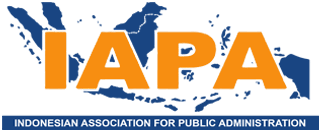DISASTER MITIGATION AND REGIONAL REBRANDING OF DISASTER-AFFECTED TOURISM AREAS IN INDONESIA
DOI:
https://doi.org/10.30997/jsh.v13i2.6730Keywords:
destination branding, disaster mitigation, regional branding, tourism brandingAbstract
Local Governments can make their own branding, as an identity and also the basis for regional marketing so that they can provide the maximum benefit for the community, nation and state. However, the branding strategy should also include disaster mitigation considering that Indonesia is a disaster-prone country. By ensuring disaster mitigation in the area's branding strategy, the community and visitors will feel relatively safe. This article is sourced from a research report through a grant from the Indonesian Ministry of Education and Culture. The research was conducted in Lombok in 2021 and continued in 2022 by also including benchmarking in the Toba and Yogyakarta regions. The results show that West Nusa Tenggara is relatively successful in establishing its regional branding with the theme of sport-tourism and is also currently including islands other than Lombok, However, the implementation of disaster mitigation has not yet been integrated into the branding plan
References
Albet, P., & Dewi, S. I. (2019). Strategi Branding Dinas Kebudayaan dan Pariwisata Kota Malang dalam Membentuk Image Sebagai Kota Pariwisata. Jurnal Komunikasi Nusantara, 1(2), 107-115.
Aditya, T. (2020). Manajemen Komunikasi Paska Bencana Gempa Bumi dalam Penanganan Pemulihan Pariwisata (Studi Kasus pada Dinas Pariwisata Provinsi Nusa Tenggara Barat periode Agustus 2018-Desember 2019) (Doctoral dissertation, Universitas Gadjah Mada).
Bungin, Burhan. (2015). Komunikasi Pariwisata (Pemasaran Dan Brand Destinasi). Cetakan ke-1 Jakarta: Prenadamedia Group.).
Djunaid, I. S. (2019). Enhancing local economic through rural tourism: case study Ciseeng village. Jurnal Sosial Humaniora, 10(1), 19-27.
Hankinson, G. (2007). The management of destination brands: Five guiding principles based on recent developments in corporate branding theory. Journal of brand management, 14(3), 240-254.
Herdiansyah, H. (2010). Metodologi penelitian kualitatif untuk ilmu-ilmu sosial
Hernawan, D., & Pratidina, G. (2015). Model Implementasi Kebijakan Pengembangan Pariwisata Dalam Meningkatkan Destinasi Pariwisata di Kabupaten Bogor. Jurnal Sosial Humaniora, 6(2), 94-103.
Imansyah, N. (2021). Mandalika Siap Jadi Sport Tourism Unggulan di Indonesia. Retrived from https://www.antaranews.com/berita/1950408/mendalika-siap-jadi-sport-tourism-unggulan-di-indonesia
Jelantik, S. K., & Kom, M. I. (2021). KONSEP DASAR BRANDING DESTINASI WISATA. Marketing Tourism Services, 51.
Kalandides, A. (2011). City marketing for Bogotá: a case study in integrated place branding. Journal of Place Management and Development, 4(3), 282-291.
Khafid, S. (2019). Pasca Gempa Lombok, Industri Pariwisata NTB Belum Pulih. Retrieved https://bisnis.tempo.co/read/1191435/pasca-gempa-lombok-industri-pariwisata-ntb-belum- pulih
Keller, K. L. (2013). Building, Measuring, and Managing Brand Equity.
Kylänen, M., & Rusko, R. (2011). Unintentional coopetition in the service industries: The case of Pyhä-Luosto tourism destination in the Finnish Lapland. European Management Journal, 29(3), 193-205.
Muktaf, Z. M. (2017). Wisata Bencana: Sebuah Studi Kasus Lava Tour Gunung Merapi. Jurnal Pariwisata, 4(2), 84-93.
Nugroho, P., Yusuf, M., & Suryono, S. (2013). Strategi Pengembangan Ekowisata di Pantai Pangandaran Kabupaten Ciamis Pasca Tsunami. Journal of Marine Research, 2(2), 11-21.
Purnamasari, D. 2017. Indonesia, Negeri Ribuan Bencana. Retrieved https://tirto.id/indonesia-negeri-ribuan-bencana-cCnu
RL (2019). Lombok Sumbawa Infinite Experiences menjadi brand baru Pariwisata NTB. Retieved from https://radarlombok.co.id/lombok-sumbawa-infinite-experiences-menjadi-brand-baru-pariwisata-ntb.html
Rinjani, R. (2021). Dorong Kebangkitan Pariwisata Lombok Geopark Rinjani Insiatif Gelar Festival Sport Tourims. Retrieved from https://bappeda.ntbprov.go.id/dorong-kebangkitan-pariwisata-lombok-geopark-rinjani-inisiatif-gelar-festival-sport-tourism/
Ritchie, J. R. B., & Ritchie, J. R. R. (1998, September). The branding of tourism destinations.In Annual Congress of the International Association of Scientific Experts in Tourism, Marrakech, Morocco.
Saraniemi, S. (2011). From destination image building to identity-based branding. International Journal of Culture, Tourism and Hospitality Research, 5(3), 247- 254.
Soeswoyo, D. M. (2019). Kontribusi Sektor Pariwisata dan Realisasi Rencana Induk Pembangunan Kepariwisataan Kota. Jurnal Sosial Humaniora, 10(2), 108-119.
Wahyuni, E. S., Putera, R. E., & Yoserizal, Y. (2020). Strategi Pemerintah Kota Padang Dalam Pengembangan Pariwisata Berbasis Mitigasi Bencana. Jurnal Pendidikan Ilmu Sosial, 30(1), 49-60.
Yin, R. K. (2000). Case Study Research: Design and Methods (Studi Kasus: Desain dan Metode).
Yuristiadhi, G., & Sari, S. D. L. (2017). Strategi Branding Pariwisata Indonesia Untuk Pemasaran Mancanegara. ETTISAL Journal of Communication, 2(2), 31-41.
Downloads
Published
How to Cite
Issue
Section
License
Copyright (c) 2022 Jurnal Sosial Humaniora

This work is licensed under a Creative Commons Attribution-ShareAlike 4.0 International License.
Authors submitting manuscripts must understand and agree to copyright the manuscript of the article was transferred to OJS Djuanda University. All rights reserved. The copyright release statement for the Journal of Social Humanities is set out in the Agreement Transfer of Copyright. This work is licensed under Creative Commons Attribution-ShareAlike (CC BY-SA) version 4.0 where Author and Readers can copy and redistribute material in any media or format , as well as mixing, modifying and building materials for any purpose, but they must provide appropriate credit (citing articles or content), provides a link to the license, and indicates when changes have been made. If you mix, modify, or develop, the materials you have to distribute your contributions are under the same license as the originals.
















